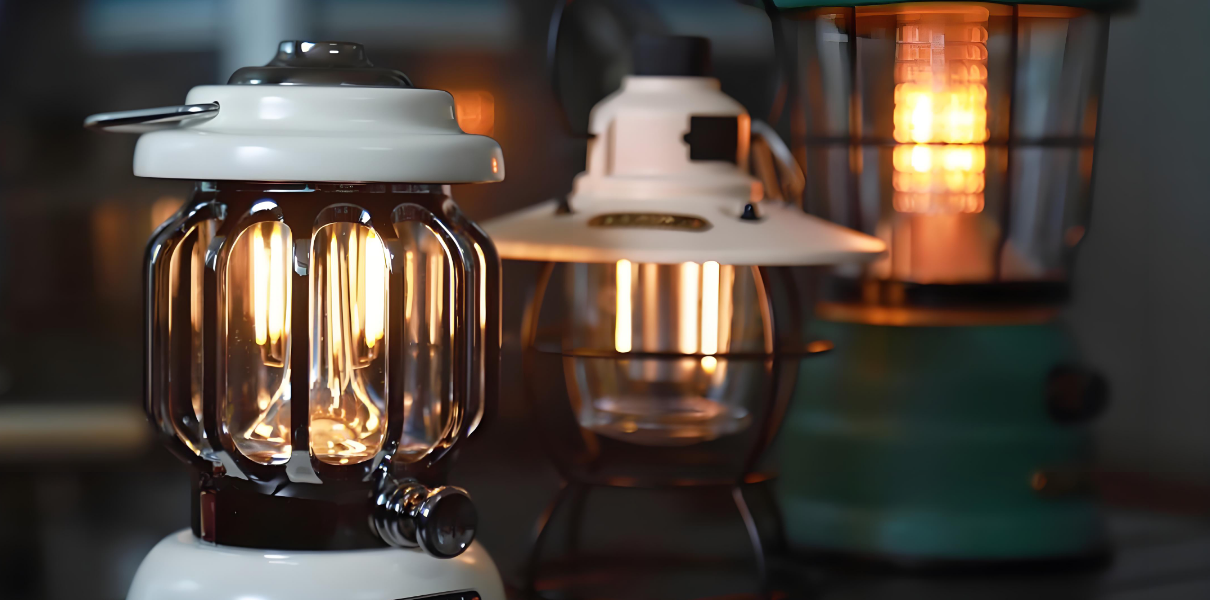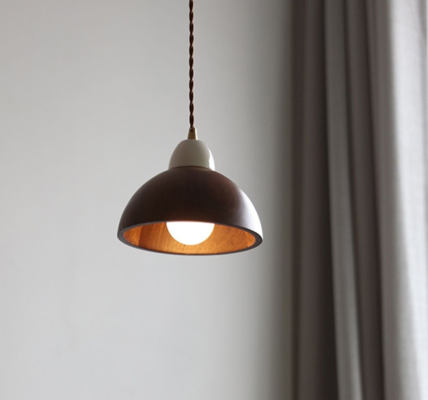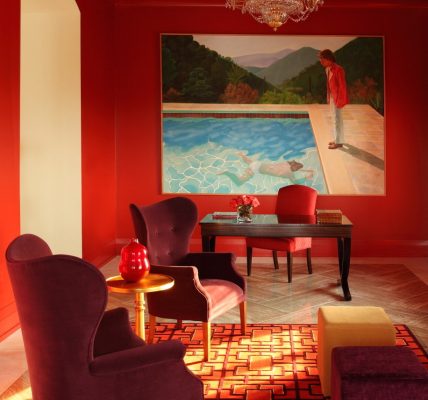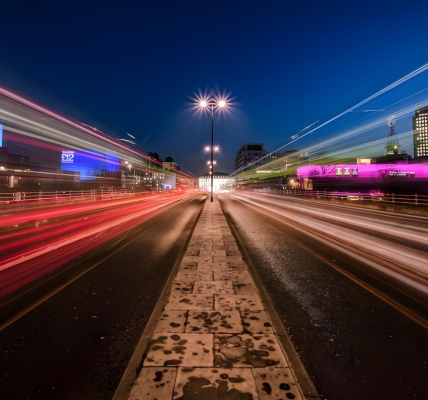Ambient light Housetonlighting refers to the general illumination in a space that provides overall visibility and sets the mood and ambiance of a room. It is an essential element in interior design as it can greatly impact the look and feel of a space. Whether it’s natural light streaming in through windows or artificial light fixtures, ambient light plays a crucial role in creating a warm and inviting atmosphere.
Lighting is an important aspect of interior design as it can enhance the overall aesthetics of a room. It can highlight architectural features, create focal points, and add depth and dimension to a space. Proper lighting can also make a room feel more spacious and comfortable. Ambient light, in particular, is important as it provides the base level of illumination that allows other lighting elements, such as task lighting and accent lighting, to shine.
Benefits of Using Ambient Light in Your Space
1. Creates a warm and inviting atmosphere: Ambient light helps create a cozy and welcoming environment in any space. It provides a soft and subtle glow that makes people feel comfortable and relaxed. Whether it’s a living room, bedroom, or dining area, ambient light sets the tone for the entire room and makes it more inviting for both residents and guests.
2. Enhances the mood and ambiance of a room: The right ambient lighting can greatly enhance the mood and ambiance of a room. Warm, soft lighting can create a romantic and intimate atmosphere, while bright, cool lighting can make a space feel more energetic and lively. By choosing the right color temperature and intensity of ambient light, you can create the desired atmosphere for any occasion.
3. Provides a soft and subtle glow: Unlike harsh overhead lighting or bright task lighting, ambient light provides a soft and diffused glow that is easy on the eyes. It eliminates harsh shadows and reduces eye strain, making it ideal for relaxation and unwinding after a long day. Whether you’re reading a book, watching TV, or simply spending time with loved ones, ambient light creates a comfortable and soothing environment.
4. Saves energy and reduces electricity bills: Using ambient light as the primary source of illumination in a room can help save energy and reduce electricity bills. By relying on natural light during the day and using energy-efficient light fixtures, you can significantly lower your energy consumption. LED bulbs, in particular, are a great option for ambient lighting as they are long-lasting and consume less energy compared to traditional incandescent bulbs.
Different Types of Ambient Light
1. Natural light: Natural light is the most desirable form of ambient light as it provides a soft and warm glow that cannot be replicated by artificial lighting. It is also beneficial for our health and well-being as it helps regulate our circadian rhythm and boosts our mood. To maximize natural light in a space, consider using sheer curtains or blinds that allow sunlight to filter through while still providing privacy.
2. Ceiling fixtures: Ceiling fixtures, such as recessed lights or flush mount lights, are commonly used to provide general illumination in a room. They are installed on the ceiling and distribute light evenly throughout the space. Ceiling fixtures are versatile and can be used in any room, from living rooms to kitchens to bedrooms.
3. Wall sconces: Wall sconces are decorative light fixtures that are mounted on walls to provide ambient lighting. They can be used to create a warm and inviting atmosphere in hallways, entryways, or living rooms. Wall sconces come in a variety of styles and designs, allowing you to choose one that complements your interior decor.
4. Floor lamps: Floor lamps are freestanding light fixtures that provide ambient lighting while also serving as a decorative element in a room. They are versatile and can be easily moved around to different areas of a space. Floor lamps are particularly useful in areas where overhead lighting is not sufficient or when you want to create a cozy reading nook.
5. Table lamps: Table lamps are similar to floor lamps but are smaller in size and designed to be placed on tables or desks. They provide localized ambient lighting and can be used in bedrooms, living rooms, or home offices. Table lamps come in various styles and sizes, allowing you to choose one that fits your personal taste and the decor of your space.
6. LED strips: LED strips are a versatile and energy-efficient option for ambient lighting. They are flexible strips with small LED lights embedded in them and can be easily installed under cabinets, along shelves, or behind furniture to create a soft and subtle glow. LED strips come in different colors and can even be programmed to change colors, allowing you to create a fun and playful effect in your space.
Choosing the Right Ambient Light for Your Space
1. Consider the size and layout of the room: When choosing ambient light for a space, it’s important to consider the size and layout of the room. Larger rooms may require multiple light fixtures or higher wattage bulbs to ensure adequate illumination. On the other hand, smaller rooms may only need one or two light fixtures to provide sufficient ambient lighting.
2. Determine the purpose of the room: The purpose of the room should also be taken into consideration when choosing ambient light. For example, a bedroom may require softer and warmer lighting to create a relaxing atmosphere, while a kitchen may benefit from brighter and cooler lighting for better visibility during food preparation.
3. Choose the appropriate color temperature: Color temperature refers to the warmth or coolness of light. It is measured in Kelvin (K) and can greatly impact the mood and ambiance of a room. Warm white light (2700K-3000K) creates a cozy and intimate atmosphere, while cool white light (4000K-5000K) provides a brighter and more energetic feel. Choose the appropriate color temperature based on the desired ambiance of your space.
4. Select the right bulb wattage: The wattage of the light bulbs you choose will determine the brightness of the ambient light. Higher wattage bulbs produce brighter light, while lower wattage bulbs produce softer and more subtle light. Consider the size of the room and the desired level of illumination when selecting the right bulb wattage.
How to Install Ambient Light
1. Hire a professional electrician: If you’re not familiar with electrical work, it’s best to hire a professional electrician to install ambient light fixtures in your space. They have the knowledge and expertise to safely install and wire light fixtures, ensuring they are properly connected to the electrical system.
2. Follow safety guidelines: When installing ambient light fixtures, it’s important to follow safety guidelines to prevent accidents or electrical hazards. Make sure to turn off the power supply before working on any electrical connections and use proper tools and equipment. If you’re unsure about any aspect of the installation process, consult a professional.
3. Choose the right location for the light fixtures: The location of your ambient light fixtures can greatly impact their effectiveness. Consider the layout of the room and the areas that require more illumination. For example, in a living room, you may want to place ceiling fixtures in the center of the room for even distribution of light, while wall sconces can be placed near seating areas for localized lighting.
4. Test the lighting system before use: Once the ambient light fixtures are installed, it’s important to test the lighting system before regular use. Turn on each fixture and check if they are functioning properly and providing adequate illumination. Make any necessary adjustments or repairs before enjoying your newly installed ambient lighting.
Creative Ways to Use Ambient Light in Your Space

1. Highlight architectural features: Ambient light can be used to highlight architectural features in a space, such as exposed brick walls, archways, or ceiling beams. By strategically placing light fixtures near these features, you can draw attention to them and create a visually interesting focal point.
2. Create a focal point: Ambient light can also be used to create a focal point in a room. For example, by placing a floor lamp or a cluster of pendant lights over a dining table, you can create a visually striking centerpiece that anchors the space and draws the eye.
3. Add depth and dimension to a room: Ambient light can add depth and dimension to a room by creating layers of light. By combining different types of ambient light, such as ceiling fixtures, wall sconces, and table lamps, you can create a dynamic lighting scheme that adds visual interest and makes the space feel more inviting.
4. Use color-changing LED lights for a fun and playful effect: Color-changing LED lights are a great way to add a fun and playful effect to your space. They can be programmed to change colors or create different lighting effects, allowing you to customize the ambiance of your room based on your mood or the occasion.
Tips for Creating a Relaxing Atmosphere with Ambient Light
1. Use warm and soft lighting: To create a relaxing atmosphere, opt for warm and soft lighting. Warm white light (2700K-3000K) creates a cozy and intimate feel that is perfect for unwinding after a long day. Avoid harsh and bright lights that can be too stimulating and opt for softer lighting options instead.
2. Avoid harsh and bright lights: Harsh and bright lights can be too stimulating and make it difficult to relax. Instead, choose ambient light fixtures with diffusers or shades that soften the light and reduce glare. This will create a more soothing environment that promotes relaxation.
3. Use dimmer switches to adjust the brightness: Dimmer switches are a great addition to any ambient lighting system as they allow you to adjust the brightness of the lights. This gives you more control over the ambiance of the room and allows you to create a more personalized and relaxing atmosphere.
4. Add candles or diffusers for a calming effect: In addition to ambient light fixtures, consider adding candles or diffusers to your space for a calming effect. The soft glow of candlelight and the soothing scents of essential oils can further enhance the relaxing ambiance of a room.
Using Ambient Light to Highlight Artwork and Décor
1. Use picture lights to highlight artwork: Picture lights are small, adjustable light fixtures that are mounted on the wall or ceiling above artwork to highlight it. They provide localized ambient lighting that draws attention to the artwork and creates a focal point in the room.
2. Use accent lighting to showcase decorative objects: Accent lighting can be used to showcase decorative objects, such as sculptures, vases, or collectibles. By placing small spotlights or track lights near these objects, you can create a dramatic effect that adds visual interest to your space.
3. Use uplighting to highlight architectural details: Uplighting is a technique where light fixtures are placed on the floor and directed upwards to highlight architectural details, such as columns, arches, or textured walls. This creates a dramatic effect that adds depth and dimension to a room.
Enhancing Your Outdoor Space with Ambient Light
1. Use string lights to create a cozy and inviting atmosphere: String lights are a popular choice for outdoor ambient lighting as they create a cozy and inviting atmosphere. They can be hung across patios, pergolas, or trees to provide soft and subtle illumination that makes outdoor spaces feel warm and welcoming.
2. Use landscape lighting to highlight trees and plants: Landscape lighting can be used to highlight trees, plants, or other landscaping features in your outdoor space. By strategically placing spotlights or well lights near these elements, you can create a beautiful and visually appealing nighttime landscape.
3. Use pathway lighting for safety and security: Pathway lighting is important for safety and security in outdoor spaces. By installing low-level lights along pathways, stairs, or driveways, you can ensure that these areas are well-lit and safe to navigate at night.
Maintaining and Upgrading Your Ambient Light System
1. Clean light fixtures regularly: Regularly clean your light fixtures to remove dust and dirt that can accumulate over time. This will ensure that the light output is not diminished and that the fixtures continue to provide adequate illumination.
2. Replace burnt-out bulbs promptly: When a light bulb burns out, replace it promptly to maintain the effectiveness of your ambient lighting system. Burnt-out bulbs not only reduce the amount of light produced but can also strain the remaining bulbs, causing them to burn out faster.
3. Upgrade to energy-efficient LED bulbs: Consider upgrading your light bulbs to energy-efficient LED bulbs. LED bulbs are more durable, longer-lasting, and consume less energy compared to traditional incandescent bulbs. They are also available in a variety of color temperatures, allowing you to customize the ambiance of your space.
4. Consider adding smart lighting controls for convenience and energy savings: Smart lighting controls, such as dimmer switches or motion sensors, can enhance the convenience and energy efficiency of your ambient lighting system. Dimmer switches allow you to adjust the brightness of the lights with ease, while motion sensors automatically turn off lights when no one is in the room, saving energy in the process.
In conclusion, ambient light plays a crucial role in interior design as it sets the mood and ambiance of a room. It creates a warm and inviting atmosphere, enhances the overall aesthetics of a space, and provides a soft and subtle glow. By choosing the right type of ambient light for your space, considering factors such as room size, layout, purpose, color temperature, and bulb wattage, you can create a visually appealing and comfortable environment. Whether you’re highlighting architectural features, creating a relaxing atmosphere, showcasing artwork and decor, or enhancing your outdoor space, ambient light can greatly enhance the overall look and feel of your space. By properly maintaining and upgrading your ambient light system, you can ensure that it continues to provide the desired illumination and energy efficiency for years to come.









